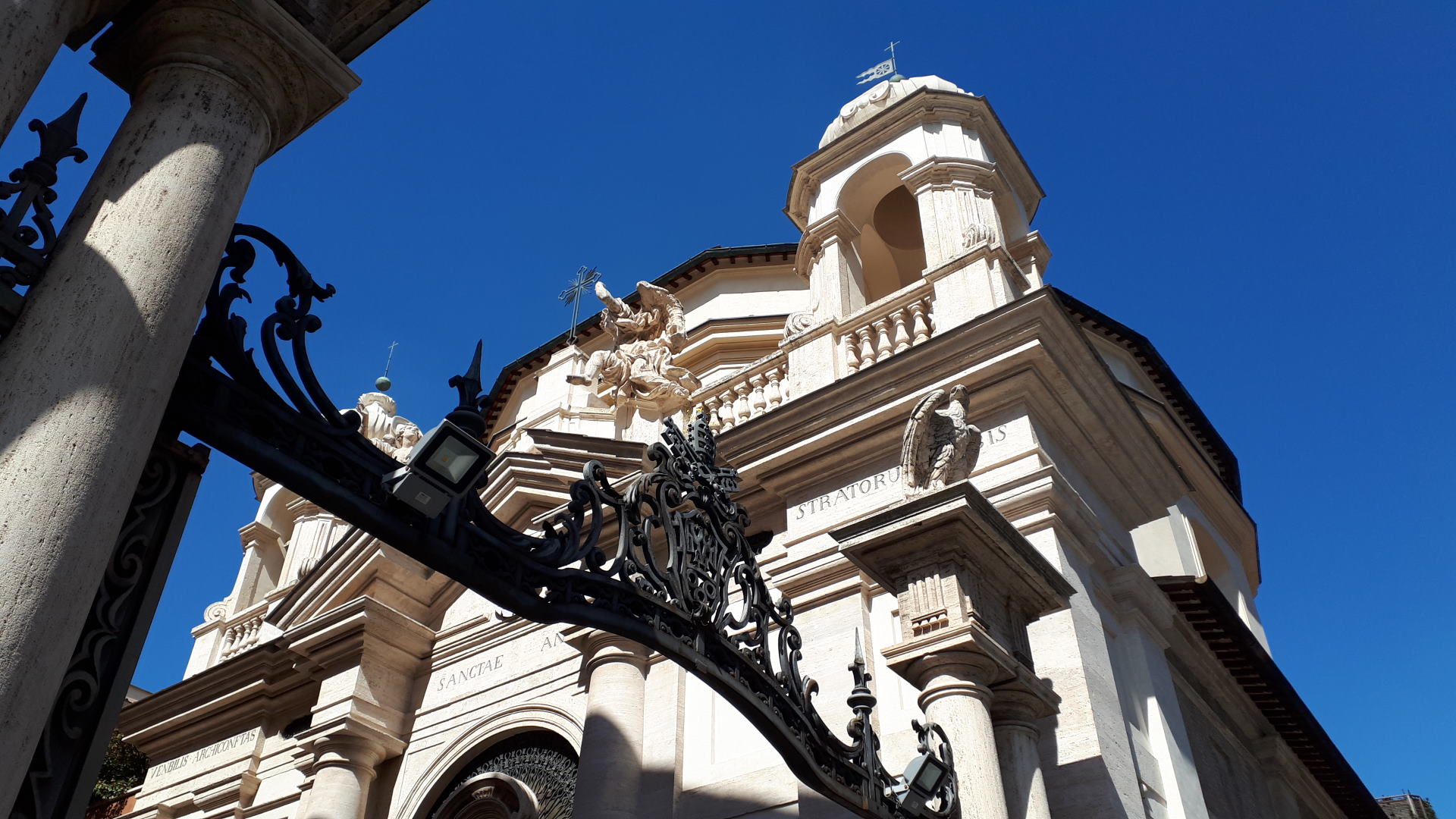
Located just beyond Porta Sant’Anna, one of the entrances to the Vatican City, the church is the only place of prayer within the Vatican walls open to the public. Its history begins in 1565 and is closely linked to the Papal Palafrenieri (or Parafrenieri, Grooms), court gentlemen originally responsible for the papal stables, who had St Anne as their patron. Before this date the confraternity met in the chapel dedicated to the saint in St Peter’s: however, when the Palafrenieri obtained from Pope Pius IV the authorization to build a church in Borgo Pio, they entrusted the project for its construction to Giacomo Barozzi, known as il Vignola, one of the great Italian architects of 16th-century Mannerism, whose imprint is still evident despite the changes and restorations of the following centuries.
Consecrated in 1583, Sant’Anna is one of the first churches in Rome with an elliptical plan. The new form gained such success that was later used in many other religious buildings, for example the Baroque churches of Sant’Andrea al Quirinale and San Carlo alle Quattro Fontane. In the early 18th century, the façade underwent the first alterations: the architect Alessandro Specchi created the balustrade on the sides of the pediment and the two bell towers. The angels on the sides of the pediment were sculpted by Michael Maille and Francesco Moderati and reflect the late Baroque taste in the heavy and wide drapery and in the strong contrasts of light and shadow.
The inner walls of the church were originally white, but in the 18th century, under the influence of the Baroque style, they were colored in light blue, cream and gray and decorated with plenty of gilt and stucco. Sculptor Giovan Battista de Rossi made the stucco angels holding garlands above the doors and the shells with festoons decorating the four frescoes with episodes from the life of St Anne. Despite the rich decoration, the essential lines of the interior were not altered and the 16th-century layout is still visible. The confraternity briefly exhibited in St. Anne Caravaggio’s Madonna and Child with St. Anne it commissioned on 31 October 1605: the painting was soon sold to Cardinal Scipio Borghese and now hangs in the museum of the Galleria Borghese.
Information
For the timetable of the masses and visiting conditions, please consult the contacts.
 Condividi
Condividi
Location
To find out about all accessibility services, visit the Rome accessible section.











































